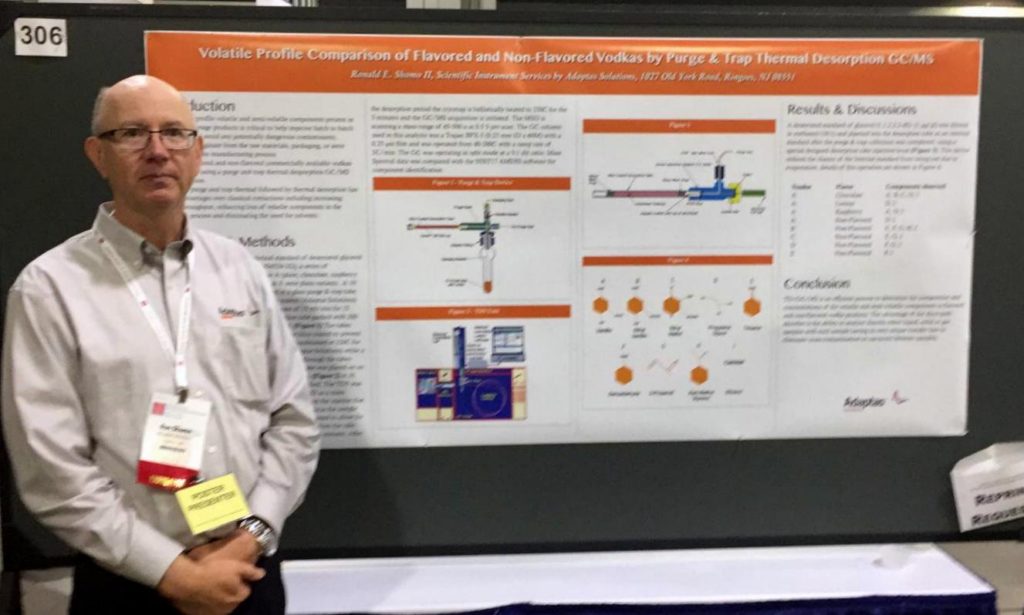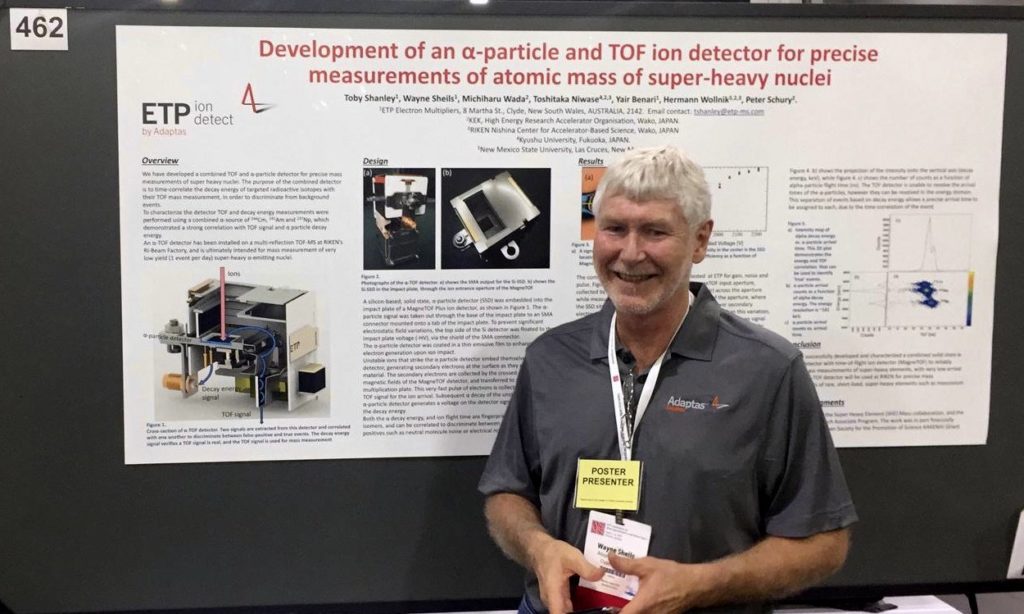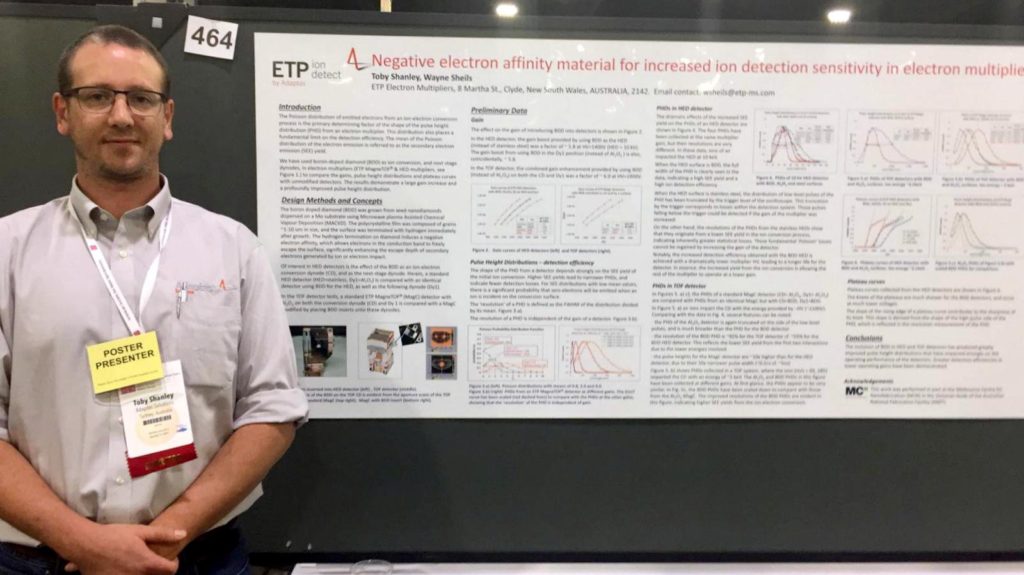Three Adaptas scientists presented posters to the more than 6,500 scientists attending the 67th ASMS Conference on Mass Spectrometry and Allied Topics in June 2019, hosted by the American Society for Mass Spectrometry.
They were:
Volatile profile comparison of flavored and non-flavored vodkas by purge and trap thermal desorption GC/MS
The paper was authored by Ronald E. Shomo II of Adaptas.

Introduction: The ability to profile volatile and semi-volatile components present in food and beverage products is critical to help improve batch to batch consistency and avoid any potentially dangerous contaminants, whether they originate from the raw materials, packaging, or were created during the manufacturing process. A series of flavored and non-flavored commercially available vodkas were analyzed using a purge and trap thermal desorption GC/MS instrumentation. The use of purge and trap thermal followed by thermal desorption has several advantages over classical extractions including increasing sample throughput, reducing loss of volatile components in the extraction process and eliminating the need for solvents.
Development of an α particle and TOF ion detector for precise measurements of atomic mass of super heavy nuclei
The authors include Wayne Sheils as well as Toby Shanley and Yair Benari of Adaptas; Michiharu Wada, Toshitaka Niwase, Hermann Wollnik, and Peter Schury.

Overview: We have developed a combined TOF and α particle detector for precise mass measurements of super heavy nuclei. The purpose of the combined detector is to time correlate the decay energy of targeted radioactive isotopes with their TOF mass measurement, in order to discriminate from background events. To characterize the detector TOF and decay energy measurements were performed using a combined α source of 244 Cm, 241 Am and 237 Np, which demonstrated a strong correlation with TOF signal and α particle decay energy. An α TOF detector has been installed on a multi reflection TOF MS at RIKEN’s RI Beam Factory, and is ultimately intended for mass measurement of very low yield (1 event per day) super heavy α emitting nuclei.”
Negative electron affinity material for increased ion detection sensitivity in electron multipliers
The paper is authored by Toby Shanley and Wayne Sheils of Adaptas.

Introduction: The Poisson distribution of emitted electrons from an ion electron conversion process is the primary determining factor of the shape of the pulse height distribution (PHD) from an electron multiplier. This distribution also places a fundamental limit on the detection efficiency. The mean of the Poisson distribution of the electron emission is referred to as the secondary electron emission (SEE) yield. We have used boron-doped diamond (BDD) as ion conversion, and next-stage dynodes, in electron multipliers (ETP MagneTOF ® & HED multipliers, see Figure 1.) to compare the gains, pulse height distributions and plateau curves with unmodified detectors. The results demonstrate a large gain increase and a profoundly improved pulse height distribution.